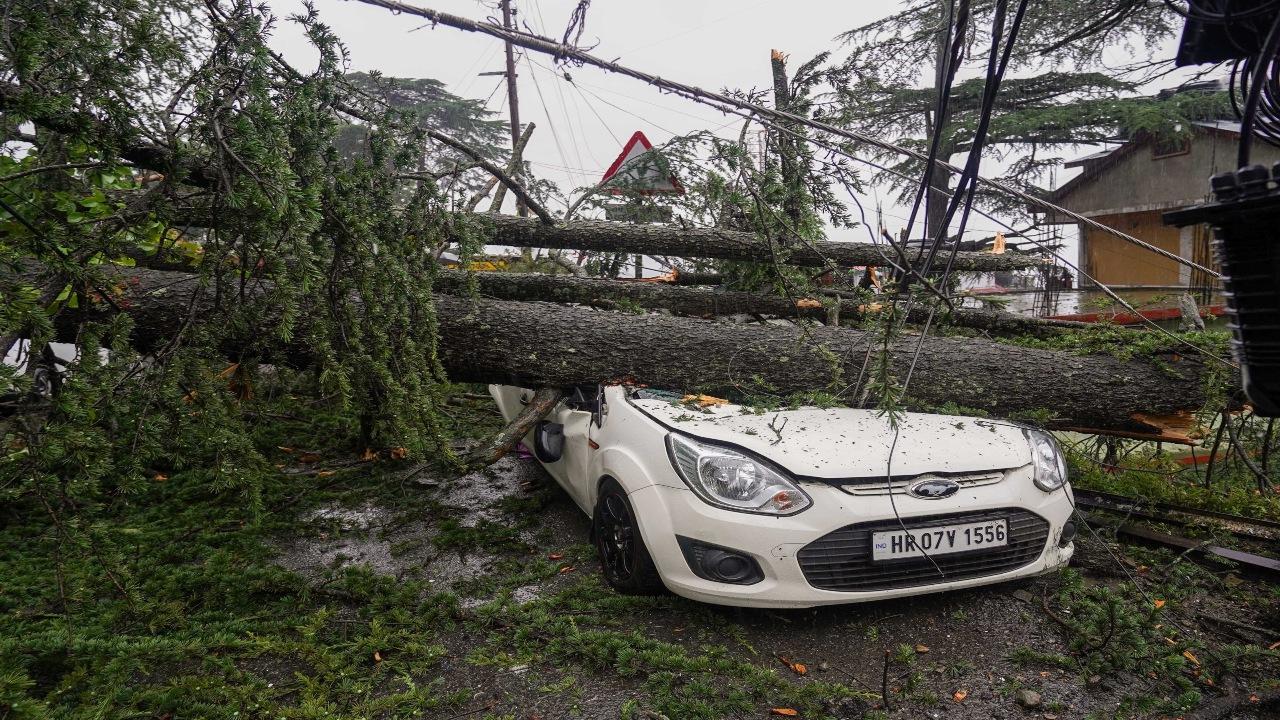- Although such circumstances are a part of the Indian monsoon, they are nevertheless uncommon.
- Himachal Pradesh has already received a heavy rain alert.
- Similar causes led to the Uttarakhand “Himalayan Tsunami” of 2013
- Large areas of north India have seen constant heavy rain as a result of a unique event caused by the confluence of two meteorological elements, with visuals evoking the 2013 “Himalayan Tsunami” that hit Uttarakhand.
The condition that occurred during the 2013 “Himalayan Tsunami,” which caused flash floods in Kedarnath and resulted in hundreds of fatalities and significant property loss in the area, is strikingly similar to that seen in the satellite photographs taken by INSAT.

According to the India Meteorological Department, the newest phenomena caused Delhi to record 153 mm of rain in 24 hours on Sunday, the most for a single day in July since 1982. In the meantime, Himachal Pradesh and Uttarakhand are already under a heavy rain alert with flash flood warnings.
THIS RARE INTERACTION: WHAT IS IT?
The monsoonal winds’ interaction with the western disturbance that has formed a trough above Himachal Pradesh and the Indian Meteorological Department (IMD) have been confirmed as the cause of the heavy rain in several areas of Himachal Pradesh and Uttarakhand. According to the most recent IMD assessment, northeast Rajasthan and its bordering territories are under a low pressure system.
According to an IMD bulletin, this interaction between the western disturbance and monsoonal winds is anticipated to continue for the next 24 to 36 hours and result in significant rainfall in the majority of northwest India.
Even though such events are a component of the Indian monsoon, they are nevertheless uncommon. The intensity and spread of the rains have increased, according to IMD Shimla Director Surender Paul, as a result of the interaction of the monsoonal winds with the western disturbance.
WESTERN DISTURBANCE AND MONSOON WINDS: WHAT ARE THEY?
An extratropical cyclone or low-pressure system known as a “Western Disturbance” develops in the Mediterranean Sea and moves eastward across Iran and the Middle East, bringing weather changes to the Indian subcontinent.
The weather in northern India is significantly impacted by Western Disturbance. These disturbances cause cloud cover, precipitation, and occasionally snowfall in the higher elevations of the Himalayan region as they move towards the northwest of the country.
The Indian Monsoon is caused by seasonal wind patterns that prevail in the Indian subcontinent, which are referred to as monsoonal winds. These two winds—the Southwest and Northeast Monsoons—bring India’s necessary rainfall in the summer and winter.





